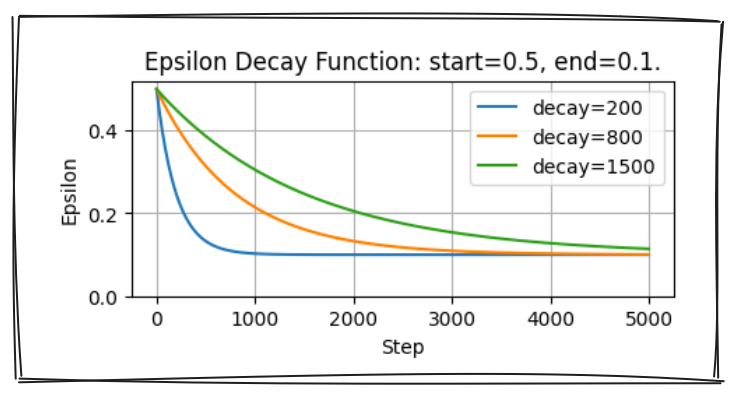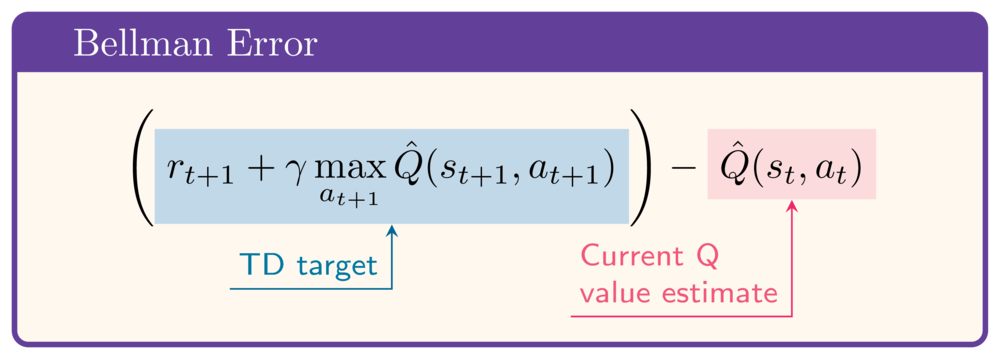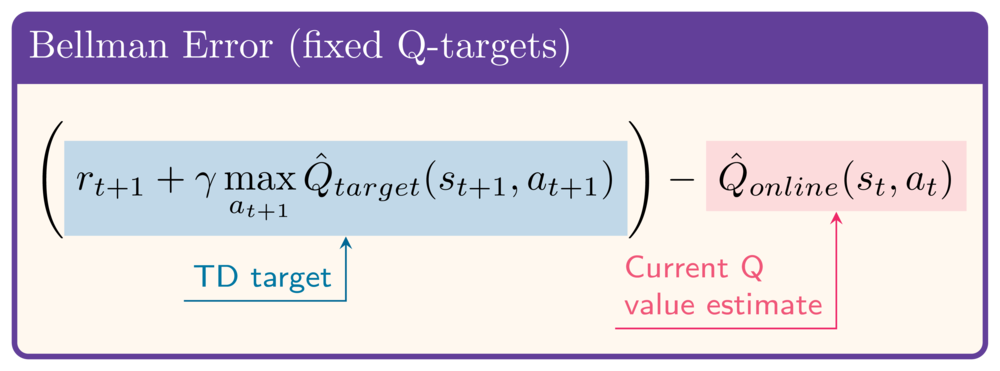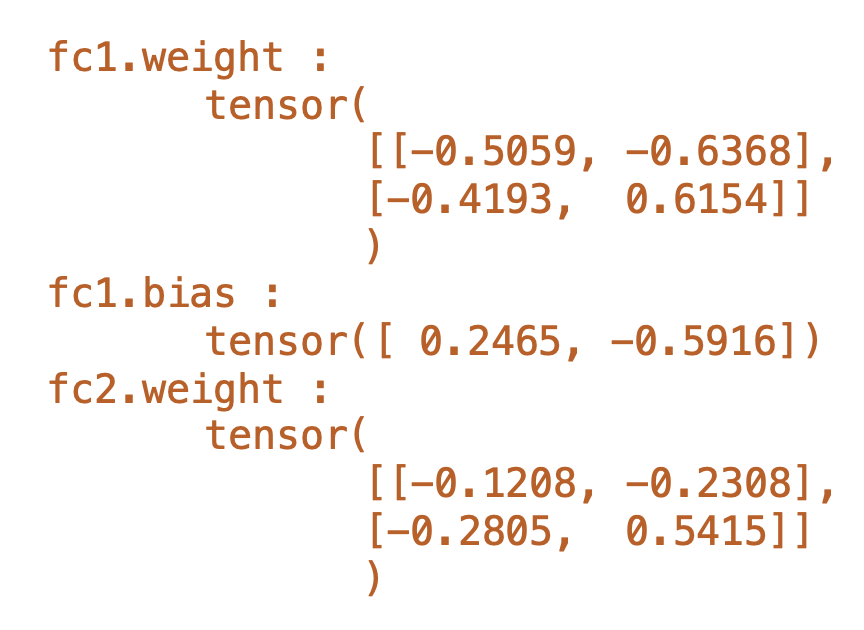The complete DQN algorithm
Deep Reinforcement Learning in Python

Timothée Carayol
Principal Machine Learning Engineer, Komment
The DQN algorithm
- We studied DQN with Experience Replay
- Close to DQN as first published (2015)
- We still miss two components:
- Epsilon-greediness -> more exploration
- Fixed Q-targets -> more stable learning


Epsilon-greediness in the DQN algorithm
- Implement Decayed Epsilon-greediness in
select_action()
def select_action(q_values, step, start, end, decay):# Calculate the threshold value for this step epsilon = ( end + (start-end) * math.exp(-step / decay))# Draw a random number between 0 and 1 sample = random.random()if sample < epsilon: # Return a random action index return random.choice(range(len(q_values)))# Return the action index with highest Q-value return torch.argmax(q_values).item()
- $\varepsilon = end + (start-end) \cdot e^{-\frac{step}{decay}}$
- Take random action with probability $\varepsilon$
- Take highest value action with probability $1 - \varepsilon$

Fixed Q-targets
- In Bellman Error:
- Q-Network in both Q-Value and TD-Target calculation
- Instability from shifting target
- Introduce target network to stabilize target


Implementing fixed Q-targets
online_network = QNetwork(state_size, action_size) target_network = QNetwork(state_size, action_size)target_network.load_state_dict( online_network.state_dict())def update_target_network( target_network, online_network, tau):target_net_state_dict = target_network.state_dict() online_net_state_dict = online_network.state_dict() for key in online_net_state_dict:target_net_state_dict[key] = ( online_net_state_dict[key] * tau + target_net_state_dict[key] * (1 - tau))target_network.load_state_dict( target_net_state_dict)return None
- Initially Online Network = Target Network
- A network's state dict contains all weights:

- Each step, every weight of Target Network gets a bit closer to Online Network
Loss calculation with fixed Q-targets
# In the inner loop, after action selection if len(replay_buffer) >= batch_size: states, actions, rewards, next_states, dones = replay_buffer.sample(64)q_values = (online_network(states) .gather(1, actions).squeeze(1))with torch.no_grad():next_q_values = ( target_network(next_states).amax(1)) target_q_values = ( rewards + gamma * next_q_values * (1 - dones))loss = torch.nn.MSELoss()(target_q_values, q_values) optimizer.zero_grad() loss.backward() optimizer.step()update_target_network( target_network, online_network, tau)
- Q-values use
online_network - Target Q-values use
target_network - Use
torch.no_grad()to disable gradient tracking for target Q-values - Still use Mean Squared Bellman Error for loss calculation
- Use
update_target_network()to slowly updatetarget_network
Let's practice!
Deep Reinforcement Learning in Python

